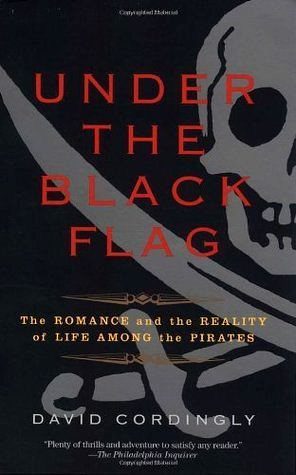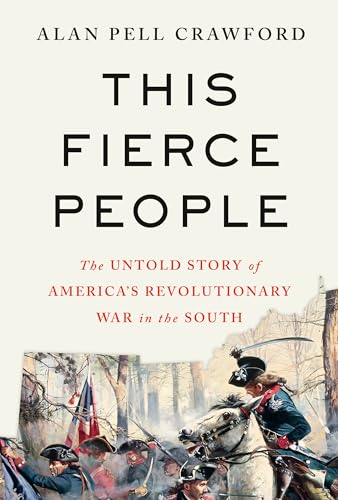Avast mateys, there be treasure in this here book!

About six weeks ago I posted my autumn reading list. You can see it here: https://www.mrvintageman.com/mrvintagemans-autumn-reading-list-for-2024. One of the books on list, called Enemies of All, was about pirates. I had this book in my Amazon shopping cart and was all ready to pay for it, but I hesitated. A nagging voice in the back of my brain was adamant that this book sounded very familiar. I knew I had not purchased this book, because it had just been released in May of this year. My memory may not be what it once was, but I am fairly certain I would remember purchasing a book if it was that recent.
So I closed out of Amazon, and wandered into the Vintage library. I perused every shelve thoroughly. And sure enough, I found a book on pirates that I had purchased at the Whydah Pirate Museum in West Yarmouth, Massachusetts (https://www.discoverpirates.com/).
Under the Black Flag, by David Cordingly, apparently covers much of the same ground the Enemies of All does. While both books do go into some detail of pirates of other eras and locations, their main focus is primarily on the so-called “Golden Age” of piracy. Since I had a book on pirates already, I decided to read it and not the one on my reading list.
I thoroughly enjoyed Under the Black Flag. It is a very concise and readable historical tale about the pirates who preyed on merchant ships in the Atlantic, Caribbean and Indian oceans. Mr. Cordingly in unsparing in the realities of piracy in the late 16th and early 17th centuries. Contrary to how it is portrayed in the movies, the life of a pirate back then was usually short and brutal. However, it was an improvement of the life of being a sailor on a merchant ship at the time. Merchantmen were at the mercy of tyrannical ship captains and hard driving ship owners. They had no recourse whatsoever if they ran afoul of the powers that be. The life of a merchant marine was worse than even than that of a sailor on a British or French warship.
Which was a big part of the appeal of the pirate lifestyle. Before sailing, the crew chose their captain, set up the rules and regulations binding the crew while they were shipboard in writing, and determined how the spoils of their raids would be doled out, all before they set sail. A thoroughly democratic society in a world ruled by monarchies.
The only thing I found off-putting about this book is some of the non-sequiturs sprinkled throughout the book. The author is talking about a certain subject, but then suddenly wanders off on a entirely different tangent. For example, in the chapter “Into Action Under The Pirate Flag”, Mr. Cordingly goes delves into the strategies and tactics pirates used to hunt and capture their prey. Then he suddenly shifts into how ship battles have been portrayed by film and television, and closes out the chapter on the various actors and actresses who have portrayed pirates through the years! A worthy subject, but should have been a chapter of its own.
Still, a very delightful read. Highly recommend.
Interlude

What’s on my nightstand

The next book I am going to start reading also wasn’t on my autumn reading list. Refer to the cartoon above as to why. While I was preparing to purchase Enemies of All, The-Great-Big-Amazon-Corporation was kind enough to recommend the book This Fierce People to me. This Fierce People is a historical account of the battles and intrigues that occurred in the southern colonies during the Revolutionary War.
The southern portion of the Revolutionary War tends to get short shrift by most historians. Just about all Americans know about the major events in the Northern colonies. The “Sons of Liberty ” agitating for independence, the Boston Tea Party, the battles of Lexington and Concord, the battle at Bunker Hill, and Washington’s miraculous victory at Trenton on Christmas Day 1776, are events quite well known. Then a six year gap appears in our memory banks, until boom! The Continental Army and the French defeat the British at Yorktown 1783.
Which is too bad. Because some of the most important events in the War happened in the South during those six years. After 1778, the British, who were stymied in the North, shifted to a Southern strategy. They felt that there was a stronger loyalist faction in the Southern states who would be more sympathetic to Brits. They also figured that if they could conquer the southern colonies, the northern colonies would be isolated and eventually surrender. They misjudged the situation.
The American resistance to the Southern strategy started off badly for the Americans. From the loss of Charles Town (Charleston) and Savannah to British forces, and the disgraceful flight of the American General Horatio Gates, the fate of the Revolution were looking grim for the Americans. But things began to look up when the brilliant Quaker General, Nathaniel Greene, took command of the American forces in the South. The victories (or at least draws) at the Battle of Cowpens and the Battle of Guilford Courthouse, and Greene’s brilliant guerilla strategy in the Carolinas, all led to the final battle at Yorktown.
I think there are several reason’s for America’s amnesia about the Southern part of the War. A big one of course is slavery. A little hard to root for the states that insisted on independence, but also insisted on keep humans as chattel.
There was also the fact that there were indeed a lot of Loyalists in the South during the war. Because of that, the Southern campaign wasn’t just a Revolutionary War, is was also a sort of Civil War. Brother fought brother, and father fought son. It was a particularly bloody and viscous campaign.
My knowledge of the Southern campaign is spotty, so I am eager to crack open Alan Pell Crawford’s This Fierce People. I’ll let you know if it is any good.
NaNoWriMo
We are about a third of the way through the National Novel Writing Month (https://nanowrimo.org/). The idea is that during the month of November, aspiring writers set a personal goal to write a certain amount of words every day of the month. By the end of the month, the author has a very rough draft of a book. Admittedly, not a very good book, because writers are not supposed to concern themselves with spelling, punctuation or grammar while writing. The idea is to just get the book written, and worry about proofreading and editing later.
As Hemingway so elegantly stated, “the first draft of anything is shit”.
Of course, you can do this exercise any month of the year. The NaNoWriMo non-profit that spearheads this activity chose November. I’m sure they had their reasons, but it’s not important enough for me to look it up as to why.
I myself have contemplated trying to write a novel during NaNoWriMo, but the thought of it intimidates me. For some people writing comes easily. Not for me. While I am a reasonably decent writer, I find the activity of writing hard. Even writing simple blog posts can take me days. Hell, this post alone has taken me almost a week to complete.
Has anybody out there ever tried this challenge? If so, how did it go? Did you find it arduous, or was it a breeze? Were you happy with the results? I would really like to hear about your experience. Perhaps one day I will attempt the challenge myself. Should I ever do so, I will let you know how it went.
Finis
So, what book have you got your nose stuck into right now?
Christmas is rapidly approaching. Assuming you have been good boys and girls, what books are you going to ask Santa to leave under your Christmas tree?


